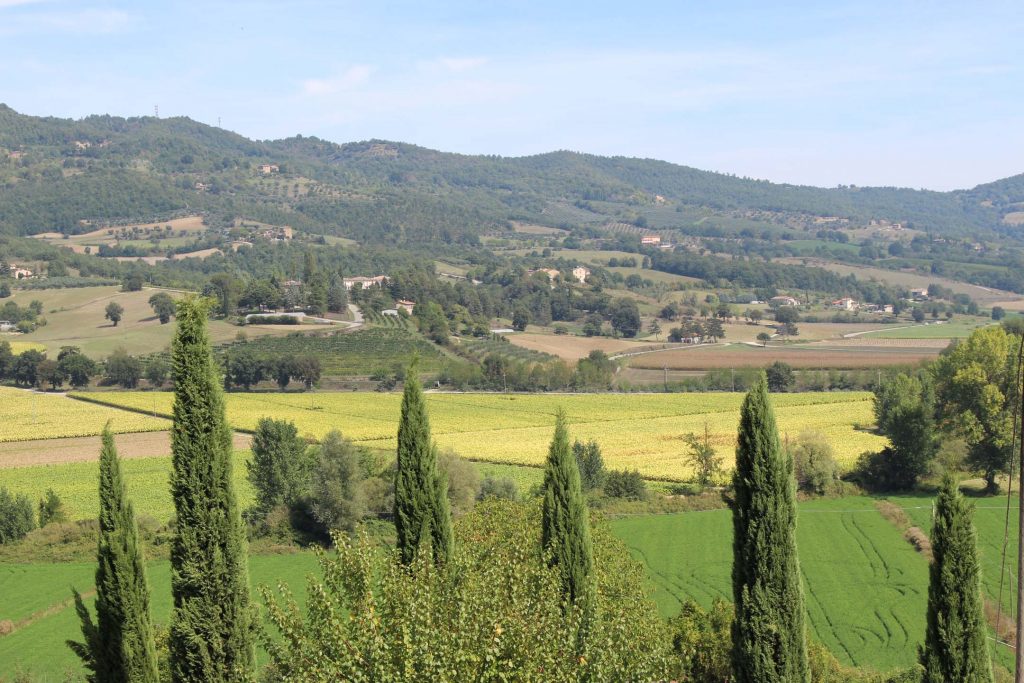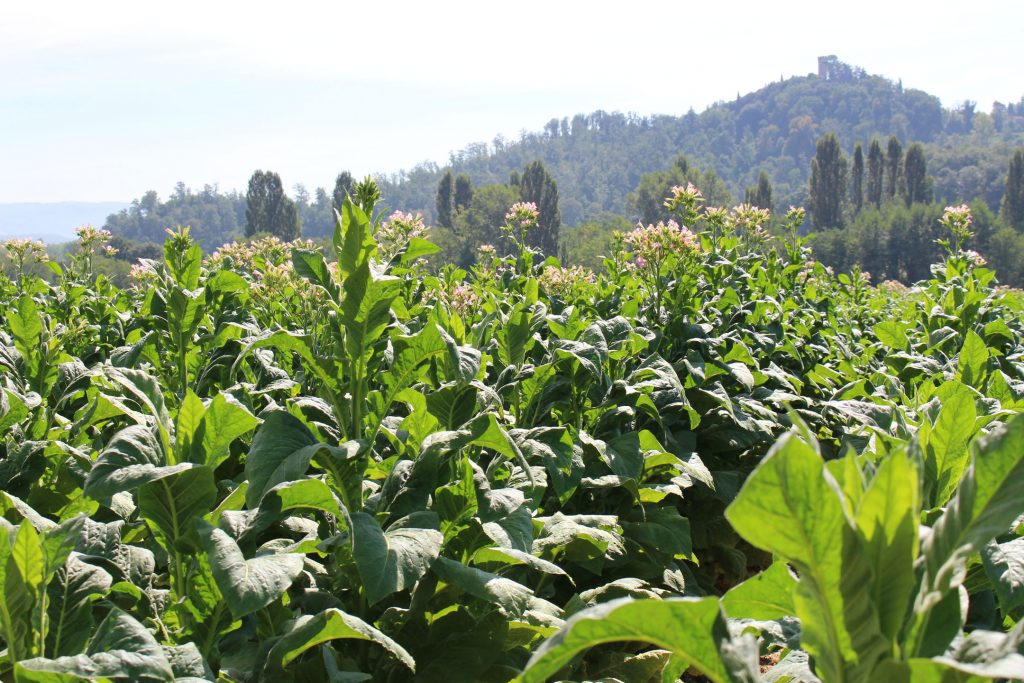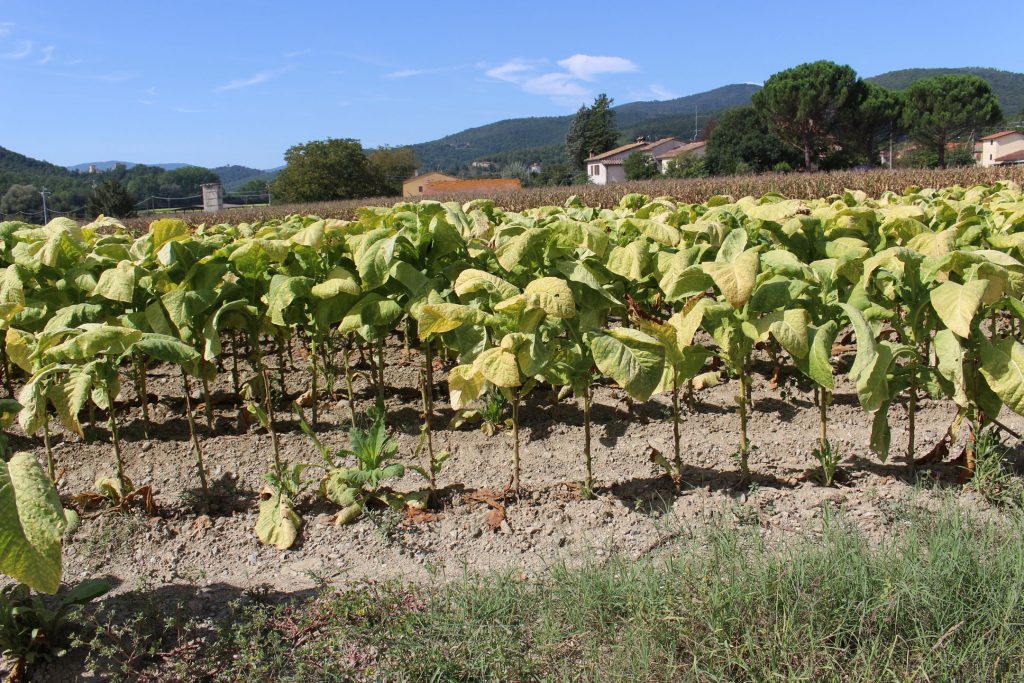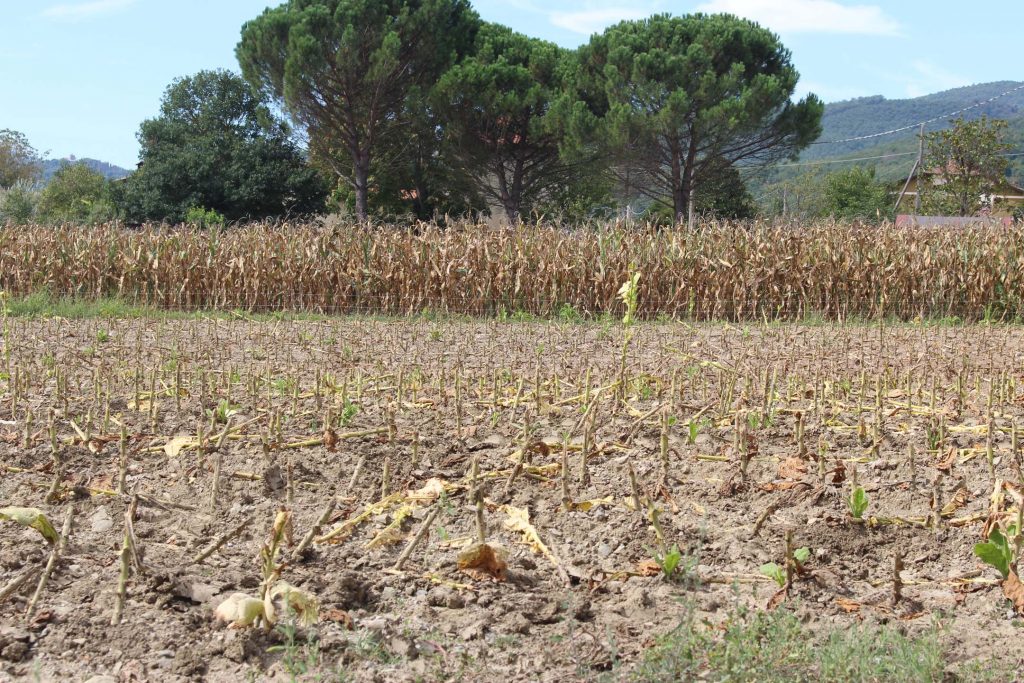Ah. It’s the season for the Yellow Waves of … Tobacco?! Yes, tobacco.
From about Perugia, northward to the mountains and the source of the Tiber river is fertile ground for tobacco. All along the river plain and up into the valleys to the east and west you will see field after field of tobacco. It is a huge cash crop for the farmers around here.
It is used to make cigarettes and also the Tuscan cigars. Umbria is one of three regions in italy to grow tobacco, the other two are the Veneto and Campagnia.
Farmers practice rotation of their fields. The rotating crops are: sunflowers, corn, winter wheat, tobacco, and one year the field is fallow. Sometimes they plant legumes and plow them under in the fallow year. It enriches the soil.
I figure it’s none of my business who grows what and I don’t mind if they grow tobacco. I won’t be smoking it but many people do. And to tell the truth, it is a beautiful plant. Especially now when it turns from dark, forest green to bright lime, to yellow.
Tobacco facts… …
I found out it is in the same family as eggplant, pepper, petunia, potato, and tomato. Tobacco has a small seed, which cannot be sown directly in the field; seedlings are raised in selected and tended seedbeds where protection is given against heavy rain and excess sun; young seedlings are planted out by hand or mechanical transplanter, and spacing between seedlings and rows varies with the kind of tobacco and with the location. Tobacco is picked when leaves are “ripe”. Leaves ripen progressively from the bottom of the plant to the top, so lugs (the bottom leaves) are picked first and tips picked last.
Life cycle in pictures
The plants must be watered throughout the growing season. Most fields are within a short distance of a water source so water can be pumped to irrigate the fields. This field is just beside the Tiber river.
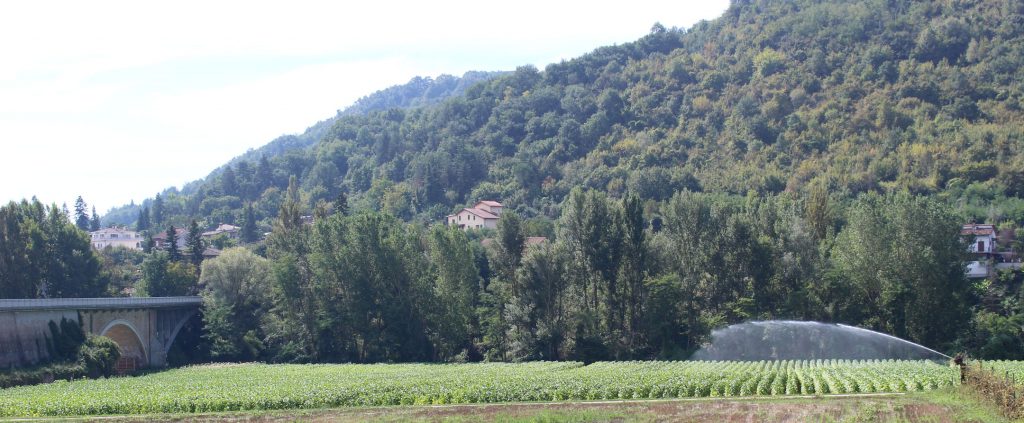
Rich and green before it begins to ripen.
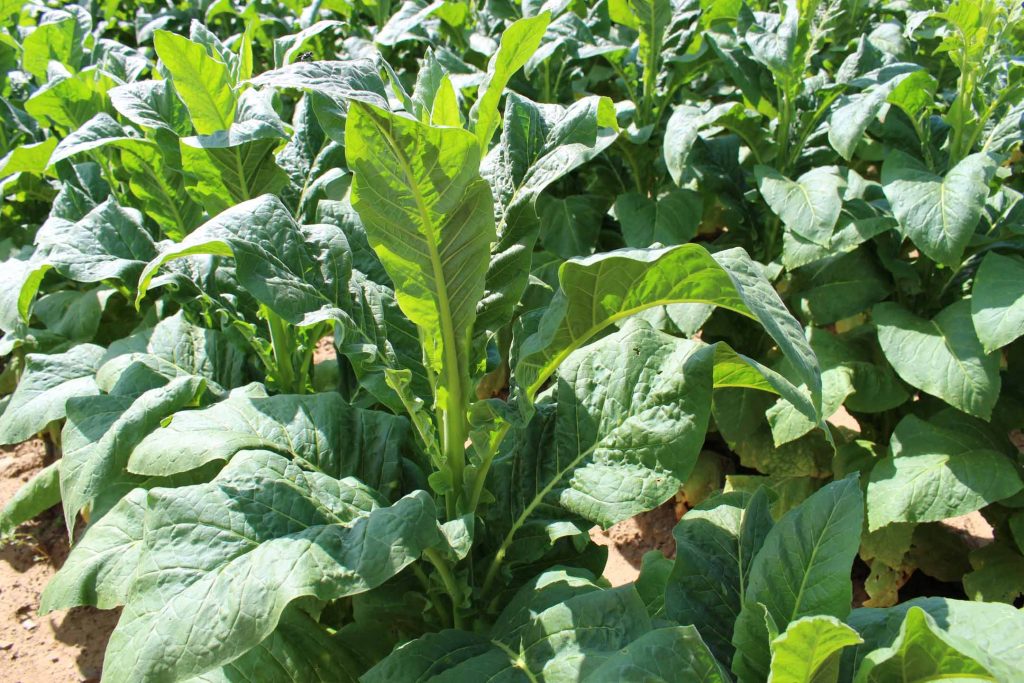
The plants do get flowers and many farmers de-flower them so they don’t go to seed. Some don’t seem to do that. The foreground plants were left to bloom.
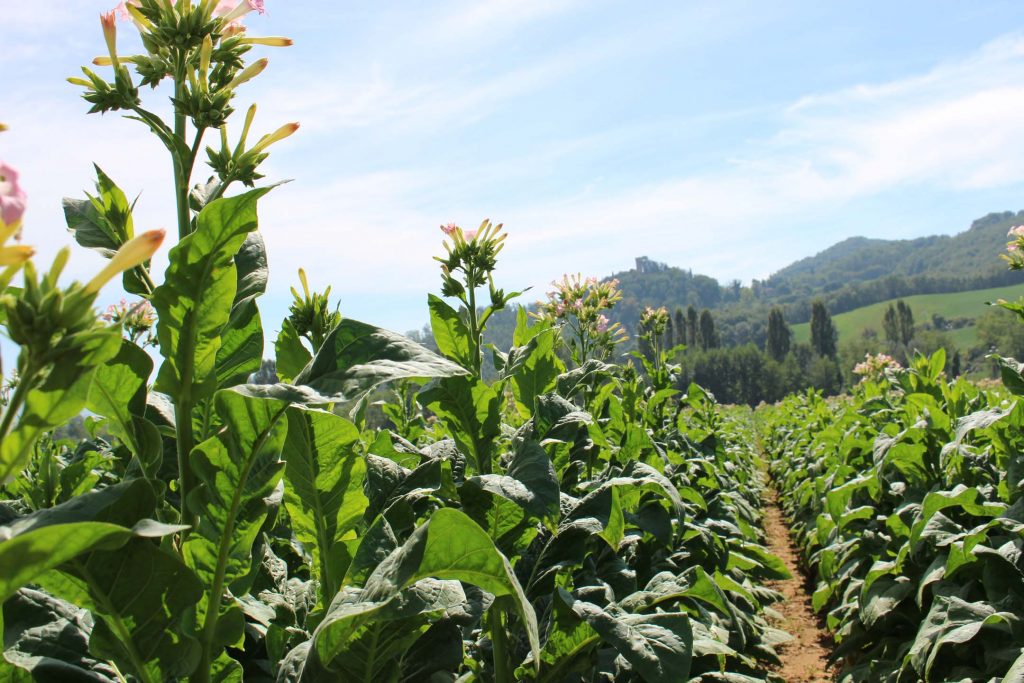
The blooms are pretty, ranging from pink to red.
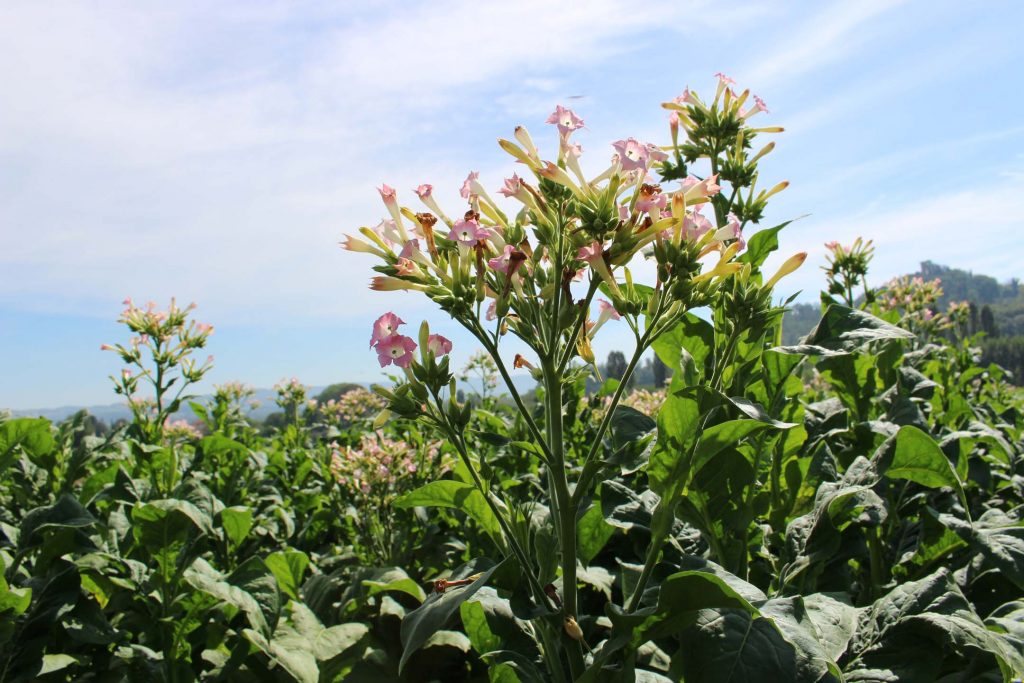
Beginning to ripen. Typically tobacco is picked six times, with three leaves taken per pick and six leaves in the final pick. Gradual picking may continue for 2 months. These have the very bottom picked already.
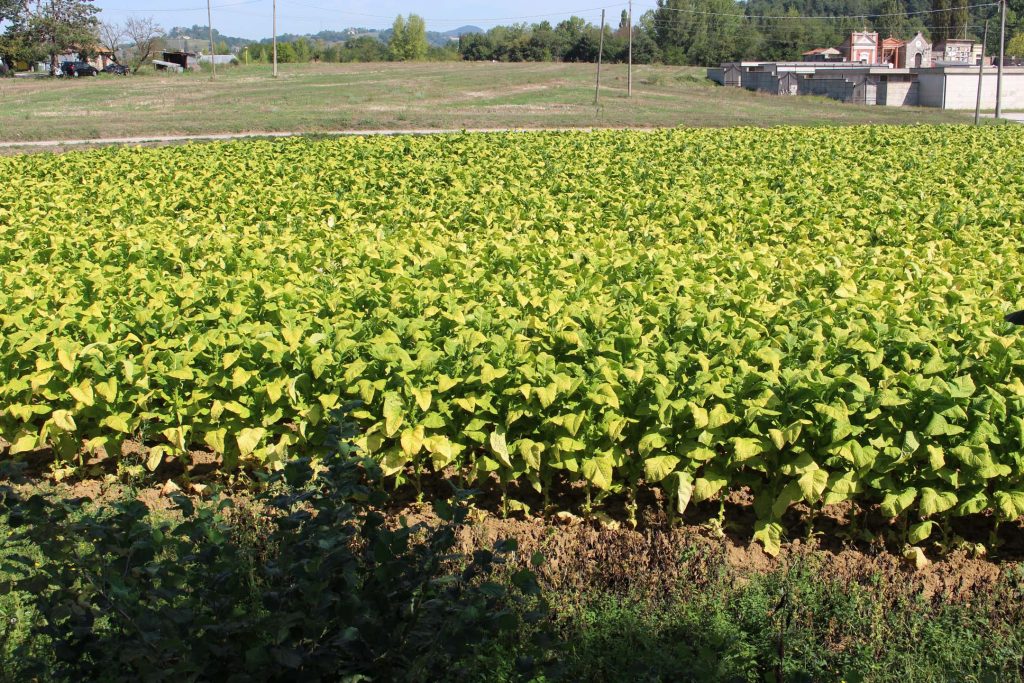
There are harvesters that take just the leaves from the bottom off and work their way to the top as they ripen to leave the stalks. The leaves are piled high into green farm wagons pulled by tractors to the ovens found throughout the area. Here is a row of ovens. The tobacco is half dried here and packed and shipped for final processing.
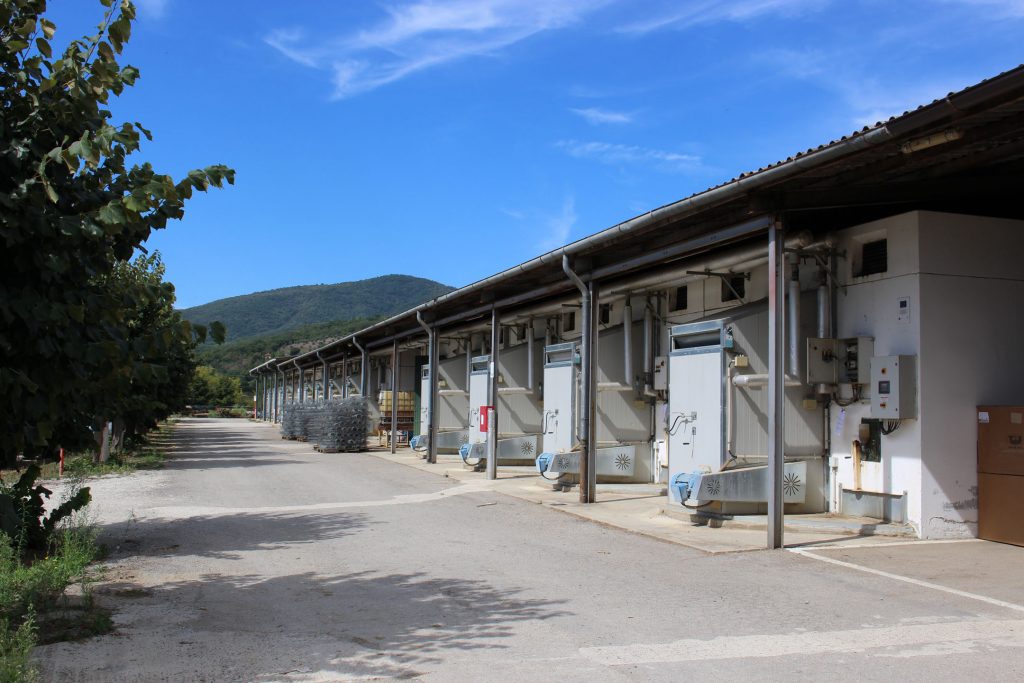
It is a seasonal rite around this area so I look forward to watching. And it is a part of the rhythm of life. The beginning of Autumn.

